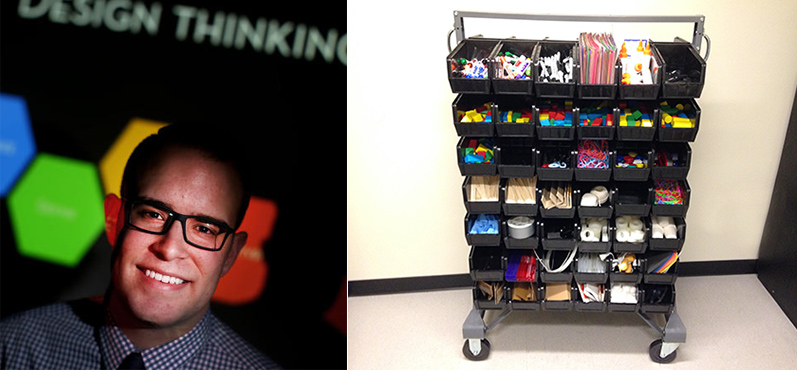Prototyping to Prove a Concept
Impact story: Tanner Wheadon, Technology Management major, Utah Valley University

One year ago, after he completed his University Innovation Fellows training, Tanner Wheadon from Utah Valley University met with his campus stakeholders and proposed the creation of a makerspace. Tanner had experienced the power of making and prototyping spaces through his work with the Fellows and his visit to Stanford University’s d.school and the Google Garage. The stakeholders were supportive of the idea and told Tanner that it would be added to the school’s long-term plans. As an undergraduate, Tanner knew that he might not be there to see his idea come to fruition. So instead of creating a space where students could learn prototyping, design thinking and other skills and mindsets, Tanner took the makerspace to the students.
“Of course it’s fun to have a big, sexy innovative space, but what do I really need to teach students?” Tanner said, recalling his thought process. “I need Sharpies, I need Post-It notes, and I need rapid prototyping supplies.”
With $750, he created a mobile prototyping cart and filled it with inexpensive materials. He designed a curriculum and proposed a plan to teach design thinking in a general education course that would be taught to 1,500 students each year. In Fall 2015, Tanner spent the semester rolling his prototyping cart around campus to teach students design thinking.
In January 2016, Tanner taught a six-hour design thinking workshop in a meeting that included Utah Valley president Matthew S. Holland and 25 members of his cabinet, high-level administration and faculty. During the workshop, Tanner led the participants through the design thinking process and helped them apply it to challenges that students and faculty face at the university.
“After the workshop, I talked about how I was applying the process to teach students at our university,” Tanner said. “I told them how I wanted to create a makerspace but we didn’t have the space or funding, and I explained my rationale behind our little prototyping cart. After I presented, I had four people come and offer me space on campus for a makerspace.”
By creating and using the cart — a low-cost alternative to a space — Tanner was able to prototype his idea for a makerspace, test it with faculty and students, collect evidence of need and impact, and share the results with his stakeholders.
“I finally got all of the right people in the room,” Tanner said. “It was a testament of the power of using a prototype to prove a concept.”
Learn more:
Read about Tanner Wheadon: universityinnovation.org/wiki/Tanner_Wheadon
Tanner tells the story about how he created his mobile prototyping cart:
Tanner discusses his mobile prototyping cart and his general education curriculum:
Elements of a mobile prototyping cart: universityinnovation.org/wiki/How_to_build_and_outfit_an_on-campus_innovation_space#Prototyping_Rack




Leave a Reply
Want to join the discussion?Feel free to contribute!